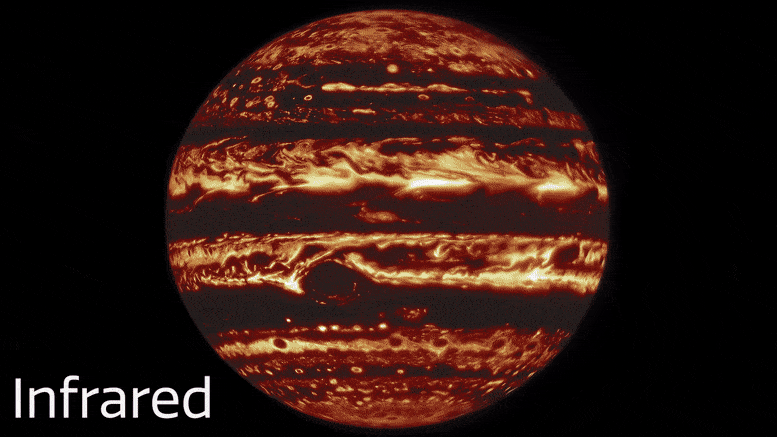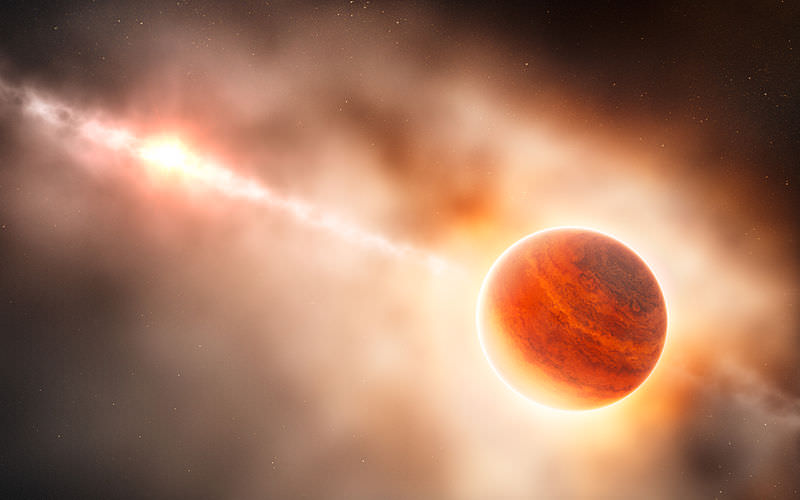Key takeaways:
- New data from Juno’s Gravity Science instrument shows that Jupiter’s core has higher concentrations of metals, indicating it consumed many rocky planetesimals during its formation.
- Jupiter’s metal-rich core suggests it formed by accreting larger bodies rather than small pebbles, shedding light on the planet’s rapid growth in its early years.
- The abundance of metals decreases from Jupiter’s core outward, suggesting there is minimal convection in its atmosphere, contradicting previous assumptions.
- Findings from Jupiter’s metallicity give insight into exoplanet studies, suggesting that observed atmospheric metallicity may underestimate the true metal content in distant gas giants.
- James Webb Space Telescope data on exoplanet atmospheres may not fully reveal the metallicity of gas giants’ interiors, similar to Juno’s findings on Jupiter.
_________________
Juno spacecraft reveals Jupiter holds between 11 and 30 Earth masses of metals.

Jupiter’s Youthful Feast on Rocky Planetesimals Revealed
Jupiter, the Solar System’s largest planet, is primarily made of hydrogen and helium, with only small traces of heavier elements, or “metals.” Yet the presence of these metals, and how they’re distributed within the gas giant, provides critical insights into its formation. A recent study published in Astronomy and Astrophysics, led by Yamila Miguel from Leiden Observatory, used data from NASA’s Juno spacecraft to probe Jupiter’s metallic makeup, revealing that Jupiter likely consumed numerous rocky planetesimals in its formative years.
The Juno spacecraft, which arrived at Jupiter in July 2016, has transformed our understanding of the gas giant with its Gravity Science instrument. This tool sends radio signals between Juno and Earth’s Deep Space Network, mapping Jupiter’s gravitational field. This process reveals information about Jupiter’s internal composition, including the distribution of metals in its deep atmosphere, which extends tens of thousands of kilometers beyond the visible cloud tops.

Formation Process and Metal Accretion
The study sought to understand how Jupiter accumulated its metal content and formed over time. Scientists theorize that when Jupiter first took shape, it accumulated rocky material before gathering large amounts of gas from the surrounding solar nebula. However, they’ve long debated whether Jupiter’s initial mass-building involved small particles, known as pebbles, or larger rock clusters, called planetesimals. According to Miguel and her team’s findings, the evidence suggests Jupiter accumulated significant amounts of larger planetesimals, rather than just pebbles.

The research team used Juno’s data to create detailed models of Jupiter’s interior. By studying the gravitational field, they measured the metal content within different regions of Jupiter’s atmosphere. Their analysis showed that Jupiter has between 11 and 30 Earth masses worth of metals, with higher concentrations found near its core and diminishing toward the outer layers. This non-uniform distribution challenged previous assumptions, indicating that Jupiter lacks significant convection—a mixing process akin to boiling water—that was previously thought to evenly disperse elements throughout its atmosphere.
“We robustly demonstrate that the heavy element abundance is not homogeneous in Jupiter’s envelope,” the study authors wrote. This discovery implies that Jupiter kept accumulating heavy elements even as it expanded by absorbing hydrogen and helium. This supports a formation model based on planetesimals or possibly a mix of pebbles and planetesimals, rather than one exclusively involving pebbles.

Implications for Exoplanet Research
The findings also offer a new perspective for studying gas giants beyond our Solar System. Miguel and her team highlight that non-homogeneous metal distribution, like Jupiter’s, could mean that measuring only the outer layers of distant exoplanets might underestimate their true metallic content. This has implications for instruments like the James Webb Space Telescope, which aims to analyze the atmospheres of exoplanets. While it will provide valuable data, Webb’s findings may not capture what lies deeper within gas giants, offering only a partial picture of their composition.
In sum, the study shows that Jupiter’s metal-rich core likely formed through the accretion of larger planetesimals, reshaping our understanding of its early years. The Juno mission’s Gravity Science experiment not only sheds light on Jupiter’s formation but also informs ongoing studies of gas giants beyond our Solar System, underscoring the complexity of planetary formation and the need for deeper examination of these massive worlds.






[…] NASA reveals how Jupiter grew by consuming rocky planetesimals in its early years […]